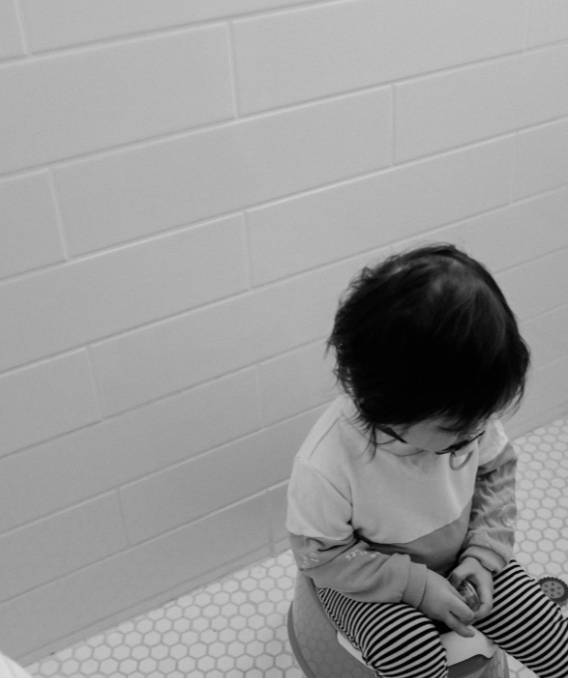
BLOG
Discover effective strategies for toilet training, transitioning away from diapers, and managing nighttime toileting. Learn when to start, signs of readiness, and practical tips for a smooth transition.
When it comes to toilet training, it’s crucial to follow a child’s developmental readiness, just like with sleep. Pushing too hard can lead to regressions and more frequent accidents, especially during significant life changes like introducing a new caregiver, welcoming a new sibling, or dropping a nap. In this post, we’ll explore a low-pressure approach to toileting, provide tips for ditching diapers during the day, and offer insights into managing nighttime toilet training.
Before diving in, I want to make one important note: I personally take issue with the very term “toilet training”, because I firmly believe that a responsive parenting approach does not involve “training” at all. That being said, for the purposes of ensuring that parents looking for a child centred approach can actually find this article, I’ve used the term throughout. Generally speaking though, I prefer toileting, toilet learning, or ditching the diapers. With that out of the way, let’s get started!
To begin the toilet training journey, offer the toilet at natural intervals when diapers are off, such as first thing in the morning and before bed/after bath. Introducing naked time allows your child to experience being diaper-free for extended periods. Over time, you’ll notice improved awareness and bladder control, indicating readiness for more significant steps.
Look out for these signs indicating that your child may be ready for toilet training:
PRO 💩 TIP: Transitioning from using diapers for bowel movements to the toilet can be challenging for some children. To avoid potential issues like anxiety, fear, or even withholding, take a gradual approach. Even if your child has made a seamless transition out of diapers for pee, it may take longer before they are comfortable using the toilet for bowel movements. If this is the case, start by having them poo only while in the bathroom; then progress to having them sit on the toilet while wearing the diaper/pull-up; then undo one side while going on the toilet; then both sides; and finally, remove the diaper/pull-up altogether.
Another fascinating approach to consider is “elimination communication” (EC). This method focuses on tuning into your child’s cues and signals for elimination needs, enabling you to catch them before they soil themselves or their diaper. While I have not personally experienced success with EC, there are valuable online resources available to explore EC further.
Ditching diapers for nighttime can present unique challenges. Many children who are ready for daytime toileting may struggle to hold their urine while sleeping. Withholding some form of wetness protection during sleep may lead to tired and upset nights, including changing sheets or discomfort caused by a wet bed.
To manage nighttime toilet training effectively, consider the following tips:
Toilet training is a significant milestone for both children and parents. By adopting a low-pressure approach, recognizing signs of readiness, and implementing effective strategies for ditching diapers and managing nighttime training, you can navigate this developmental stage successfully. Remember, every child is unique, so be patient, flexible, and supportive throughout the process.
If you are struggling to find parenting solutions that meet your family’s needs? Let’s chat!
